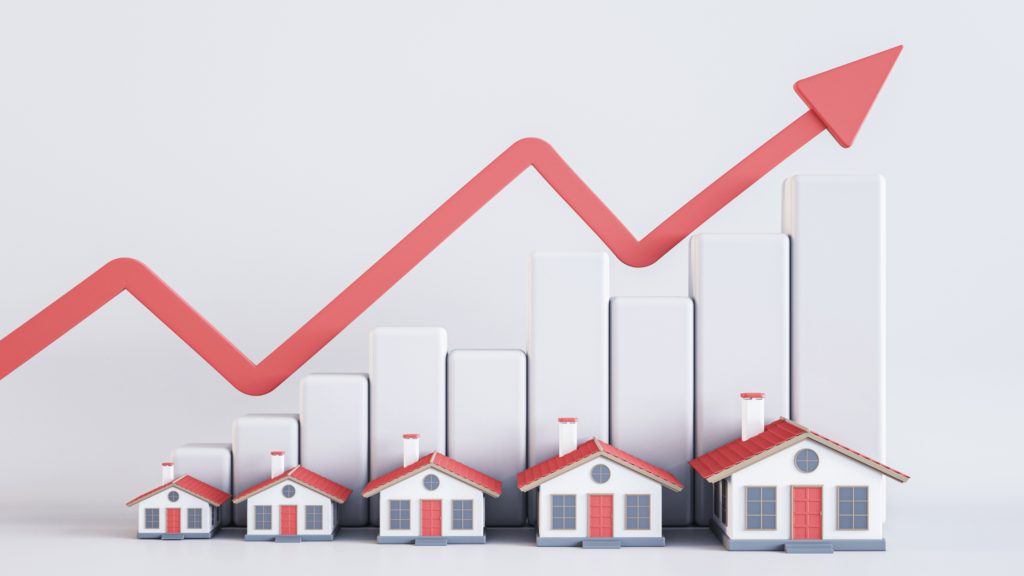Long Beach, California, boasts a vibrant coastal community with a unique housing market influenced by various factors. The cost of living in this diverse city plays a significant role in shaping home prices, affecting both potential buyers and current residents. Understanding the interplay between living expenses and property values is crucial for anyone considering a move to or within Long Beach. In this article, we’ll explore the key elements that contribute to the cost of living and their impact on Long Beach home prices.
Key Takeaways
- Long Beach’s housing market is influenced by factors like neighborhood desirability and economic trends
- Tourism significantly impacts living expenses, affecting housing costs and local business revenues
- Transportation choices and parking availability can significantly affect overall expenses in Long Beach
- The city’s diverse food scene offers options that can impact monthly expenses and budgeting
- Tax structures in Long Beach play a crucial role in determining the true cost of living
Understanding Housing Market Dynamics in Long Beach
Long Beach’s housing market dynamics shape the cost of living and home prices in this vibrant coastal city. You’ll find a complex interplay of factors influencing the real estate landscape, from neighborhood desirability to economic trends. Understanding these dynamics helps you navigate the local market, whether you’re a potential homebuyer or renter. Key aspects to consider include the average rent prices in sought-after areas and how broader real estate trends affect homeownership costs throughout Long Beach.
Assessing Average Rent Prices in Prime Locations
You’ll find rental prices vary significantly across Long Beach’s prime locations. In downtown and beachfront areas, expect to pay a premium for the convenience and views. Belmont Shore and Naples Island command higher rents due to their coastal charm and upscale atmosphere.
Impact of Real Estate Trends on Home Ownership Costs
You’ll notice that real estate trends significantly influence home ownership costs in Long Beach. As property values rise, you’ll face higher down payments and mortgage amounts, potentially stretching your budget. Keep an eye on interest rates, as even small fluctuations can impact your monthly payments and overall affordability in this competitive market.
The Role of Tourism in Shaping Local Economy and Expenses
You’ll find that tourism plays a significant role in shaping Long Beach’s economy and living expenses. This coastal city’s appeal to visitors impacts various aspects of daily life, from housing costs to local business revenues. As a resident, you’ll experience how the ebb and flow of tourists influences prices throughout the year, particularly in popular areas near the waterfront and major attractions. Understanding these dynamics helps you navigate the financial landscape of Long Beach, whether you’re considering a home purchase or simply managing your monthly budget.
Seasonal Fluctuations Affecting Hotel and Rental Rates
You’ll notice significant seasonal fluctuations in Long Beach’s hotel and rental rates, driven by the city’s tourism patterns. Summer months typically see higher prices as visitors flock to the beaches and attractions, while winter rates often dip. This cyclical nature affects short-term rental properties and vacation homes, potentially influencing your decision on when to visit or invest in the area.
Tourist Demand Driving Prices of Goods and Services Up
You’ll notice that tourist demand significantly impacts the prices of goods and services in Long Beach. As visitors flock to popular attractions and dining spots, local businesses often adjust their pricing to capitalize on the increased foot traffic. This tourism-driven inflation can affect everything from restaurant meals to souvenir shops, potentially stretching your budget if you’re not careful:
- Restaurants in tourist hotspots may charge premium prices
- Retail shops near attractions often mark up souvenirs and local goods
- Service industries like tour operators and water sports rentals may increase rates during peak seasons
- Parking fees in popular areas tend to rise with increased demand
Transportation Costs Within Long Beach Context
You’ll find that transportation costs significantly impact your overall expenses in Long Beach. The city’s layout and infrastructure shape your daily commute options, affecting both your time and wallet. Whether you rely on public transit or prefer the convenience of a personal vehicle, each choice comes with its own set of financial considerations. Understanding the trade-offs between these options helps you make informed decisions about your transportation budget. Additionally, parking availability – or lack thereof – in certain areas can add unexpected costs to your daily routine, influencing where you choose to live, work, and play within the city.
Comparing Public Transit Fees to Personal Vehicle Expenses
You’ll find that comparing public transit fees to personal vehicle expenses in Long Beach reveals stark differences. While public transit offers lower daily costs, your personal vehicle provides more flexibility and convenience. Consider these factors when weighing your options:
- Monthly bus passes cost less than typical car payments and insurance
- Fuel prices fluctuate, impacting your vehicle expenses unpredictably
- Maintenance and repairs add to the long-term cost of car ownership
- Public transit may increase commute times but reduces parking hassles
- Ride-sharing services offer a middle ground for occasional trips
Exploring the Financial Implications of Parking Availability
You’ll encounter varying parking costs throughout Long Beach, which can significantly impact your budget. In popular areas like downtown and near the beach, you might pay hefty hourly rates or struggle to find spots during peak times. Consider these parking expenses when choosing where to live or work, as they can add up quickly over time and influence your overall cost of living in the city.
Navigating Food and Dining Costs in Long Beach Areas
You’ll find Long Beach’s food scene offers a diverse range of options that can significantly impact your cost of living. From upscale waterfront restaurants to local mom-and-pop eateries, your dining choices will shape your monthly expenses. Understanding the price differences between eating out and cooking at home helps you balance your food budget effectively. By identifying budget-friendly spots and knowing when to splurge on high-end dining experiences, you can savor the city’s culinary offerings without breaking the bank. This knowledge becomes crucial as you consider how food costs factor into your overall living expenses and, ultimately, your ability to afford a home in Long Beach.
Price Differences Between Eating Out and Cooking at Home
You’ll find significant price differences between eating out and cooking at home in Long Beach. Restaurants, especially those in popular areas or with ocean views, often charge premium prices for their dishes. Cooking at home, on the other hand, allows you to control costs and portion sizes, potentially saving you a substantial amount over time:
- Grocery shopping at local markets can yield fresh ingredients at lower prices
- Bulk buying and meal planning help reduce overall food expenses
- Occasional dining out becomes a treat rather than a financial burden
- Learning to cook simple, nutritious meals saves money and improves your culinary skills
- Hosting dinner parties at home offers a cost-effective alternative to group restaurant outings
Identifying Budget-Friendly Eateries Versus High-End Dining
You’ll quickly discover that Long Beach offers a wide spectrum of dining options, from wallet-friendly spots to high-end establishments. Seek out local favorites in neighborhoods like Cambodia Town or Bixby Knolls for affordable, authentic cuisine that won’t strain your budget. For special occasions or when you’re feeling indulgent, splurge on upscale restaurants along the waterfront or in downtown Long Beach, where you’ll pay a premium for ambiance and culinary expertise.
Analysis of Tax Structures Impacting Residents’ Expenses
You’ll find that Long Beach’s tax structures significantly impact your daily expenses and, consequently, your ability to afford a home in the area. The interplay between state and local taxes shapes your overall tax burden, affecting everything from your paycheck to your grocery bill. Understanding these tax dynamics helps you make informed decisions about where to live and shop within the city. As you navigate Long Beach’s diverse neighborhoods, you’ll notice how sales tax variations can influence your purchasing habits and budget management strategies. These tax considerations play a crucial role in determining the true cost of living in Long Beach and, ultimately, the home prices you’ll encounter in different areas of the city.
Examination of State vs. Local Taxes on Daily Life
You’ll find that state and local taxes in Long Beach create a complex financial landscape. California’s high state income tax rates impact your take-home pay, while Long Beach’s local sales tax adds to your daily expenses. These combined tax burdens influence your purchasing power and ability to save for a home in the area.
How Sales Tax Variations Influence Shopping Decisions
You’ll notice that sales tax variations across Long Beach neighborhoods can influence your shopping decisions. Higher tax rates in certain areas might push you to seek out groceries, clothing, or big-ticket items in neighboring districts with lower rates. This tax-savvy approach can lead to noticeable savings over time, potentially freeing up more of your budget for housing costs.
Cost Implications of Entertainment & Recreational Activities
You’ll find that entertainment and recreational activities in Long Beach can significantly impact your overall cost of living and, by extension, local home prices. The city’s vibrant cultural scene and numerous attractions offer a wealth of options, but these come with varying price tags. From beach activities to museums, concerts, and sporting events, your leisure choices can quickly add up, affecting your budget and potentially influencing housing affordability. Understanding the cost implications of these activities helps you balance your lifestyle desires with your financial goals, especially when considering homeownership in Long Beach.
Admission Fees for Major Attractions & Events
You’ll find admission fees for Long Beach’s major attractions and events vary widely, impacting your entertainment budget. The Aquarium of the Pacific, a popular destination, charges adult tickets around $40, while the Queen Mary offers tours starting at $25. Special events like the Long Beach Grand Prix or music festivals can cost significantly more, potentially stretching your budget if you’re a frequent attendee:
- Aquarium of the Pacific: $40 for adults, less for children and seniors
- Queen Mary tours: Starting at $25 per person
- Long Beach Grand Prix: Tickets range from $35 to over $150
- Music festivals: Can exceed $100 for multi-day passes
- Museum of Latin American Art: Free on Sundays, otherwise $10 for adults
Conclusion
Cost of living significantly shapes Long Beach home prices, influencing affordability and market dynamics. Housing costs, transportation expenses, food prices, and entertainment options all contribute to the overall financial landscape residents navigate. Taxes and tourism further impact the local economy, affecting both daily expenses and long-term housing costs. Understanding these interconnected factors helps potential homebuyers and renters make informed decisions about living in this vibrant coastal city.



